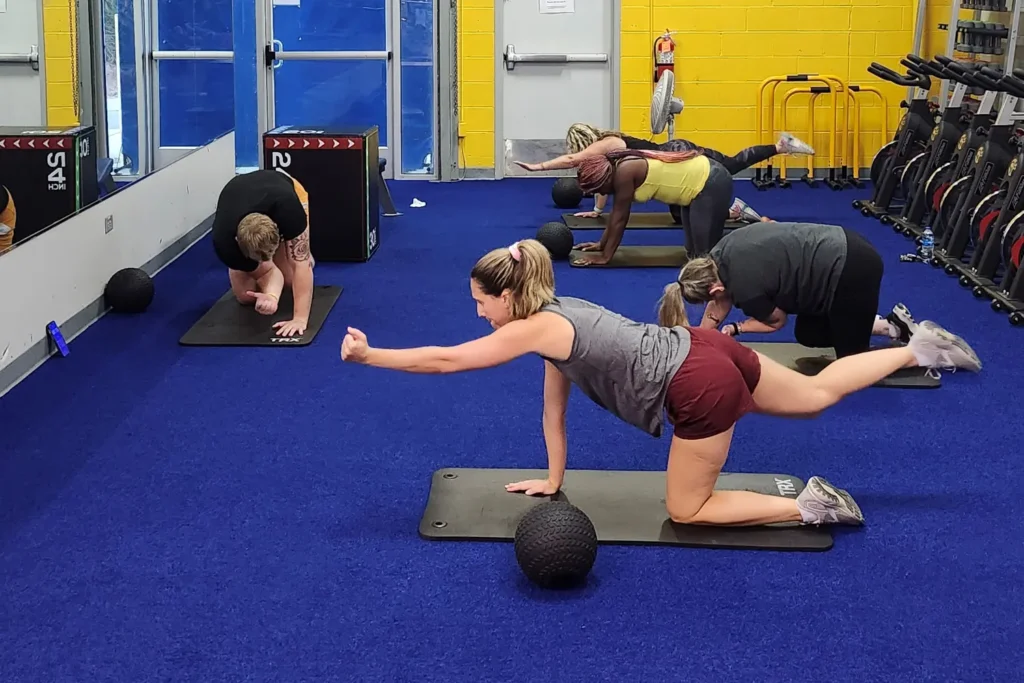The duration of holding a yoga pose can significantly influence the benefits you derive from your practice. Whether you’re aiming to increase strength, improve flexibility, or deepen relaxation, the amount of time spent in each pose can be adjusted to meet your specific goals. Here’s a guide to understanding how long you should hold a yoga pose based on different objectives and yoga styles.
Factors influencing hold times
Type of yoga
- Dynamic styles (such as Vinyasa or Ashtanga): Poses are typically held for a shorter duration, about one to five breaths, as the focus is on movement and flow.
- Static styles (such as Hatha or Iyengar): Poses can be held for longer periods, from 30 seconds up to several minutes, to deepen the stretch and improve alignment.
Fitness and experience levels
- Beginners may start with shorter hold times (15-30 seconds) to build endurance and familiarity with the poses. And if you can’t hold a pose that long, don’t stress. Here’s how to solve common yoga challenges for beginners.
- Experienced practitioners might extend the duration (1-5 minutes or more in some cases) to deepen the practice and explore the full benefits of each pose.
Benefits of different hold times
Shorter holds (15 seconds to 1 minute)
- Builds heat and stamina: Shorter holds are typical in flow sequences, helping to build body heat and cardiovascular endurance.
- Enhances muscular activation: Quick transitions can increase the activation of various muscle groups, contributing to overall strength.
Moderate holds (1 to 3 minutes)
- Increases strength and stability: Holding poses for a moderate amount of time helps in strengthening the muscles and stabilizing the joints.
- Improves flexibility: This duration allows the muscles to slowly stretch and lengthen, promoting increased flexibility.
Longer holds (3 to 5 minutes or more)
- Deepens stretch: Extended time in a pose allows for a deeper stretch, reaching into the connective tissues, particularly in Yin Yoga.
- Promotes relaxation and mental clarity: Holding a pose for a long period can have meditative effects, reducing stress and enhancing focus.
Considerations for safe practice
- Listen to your body: Always be mindful of your body’s signals. If a pose feels painful or too intense, it’s important to come out of it or adjust your alignment. Yoga should challenge you but not cause pain.
- Use props for support: Especially for longer holds, props like blocks, straps, and bolsters can provide support, reduce strain, and help maintain proper alignment.
- Focus on breathing: Deep, steady breathing is crucial in yoga. It helps to maintain relaxation and endurance while holding poses, especially during longer sessions.
- Incorporate variety: Mix different hold times within your practice to balance the development of strength, flexibility, and endurance.
If you want to join yoga classes in Sanford, visit our HiTone Fitness location there.
Final thoughts
The duration for which you hold a yoga pose can vary widely depending on the style of yoga, your personal fitness level, and specific practice goals. From quick, dynamic flows to slow, meditative holds, adjusting the length of time you spend in each pose can help you tailor your yoga practice to your needs, ensuring you get the most out of every session.





